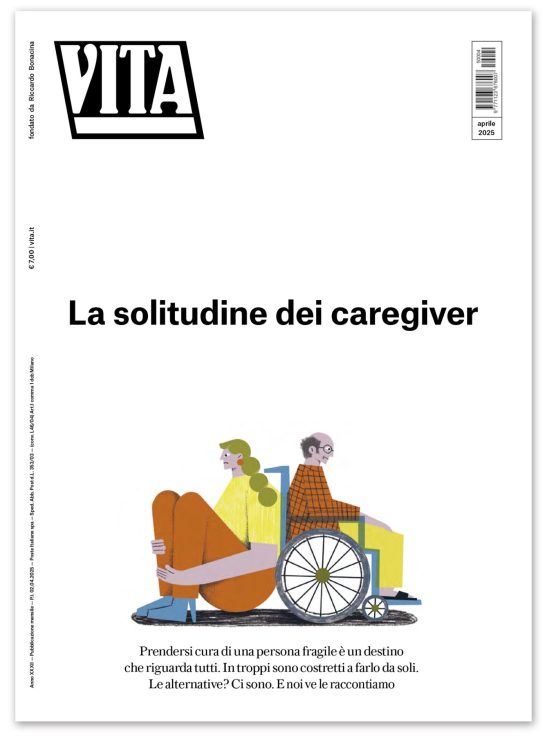Non profit
Italy: loyal or one-off donors?
The Italian Institut of donations presents the result of a research about donor loyality..
di Rita Meloni
Italian research institute GfK Eurisko, on behalf of the Italian Donation Institute (IID), conducted a survey on a representative sample of 1,000 subjects. The research results were presented yesterday at the National Conference on Donations organized by the Italian Institute for Donations.
The survey made it possible to estimate the number of both regular donors – i.e., those who donate at least once a year to the same organization – and one-off donors – i.e., those who have donated at least once in the past five years. The first account for 33% of the Italian adult population (approx. 16 million), while the latter amount to 19% (approx. 9 million).
According to the survey, people who donate regularly tend to be mostly women over 45 years of age and people with higher education – a pattern that is not found among occasional donors. There is a subtle relationship between religious stance and donating: there are many donors among people who regularly go to church (‘religious’ component) but also among people who never go to church (‘lay’ component).
On average, regular donors have supported the same organization for 7 years, whereas occasional ones have donated money to the same organization nearly 3 times in the past 5 years, which proves that they hold a non-random and not sporadic relationship. Nearly all regular donors (94%) stated they would further support that organization going forward, while just a minority (27%) of one-off donors said they were going to.
Irregular financial support can be ascribed to one of three reasons,each of equal weight (30%): financial reasons (lack of money), cultural reasons (people who want to be free to choose which organization to donate money to every year), and dissatisfaction with the organization’s conduct (lack of efficiency or transparency) or communication (contact lost).
Regular donors are typically more ‘generous’ than occasional ones. On average, they donate €180 on a yearly basis vs one-off donors with €48. The ‘regulars’ give most of their money to the organization they are loyal supporters of and the remaining amount is spread over on average 2 more organizations.
Most regular donors learnt about the organization they regularly support by word of mouth, i.e., it was recommended by a relative or acquaintance. Donations by one-off supporters, on the other hand, are most frequently triggered off by communication campaigns (advertising or information material by mail) or by media representation (notably radio and TV). A vast majority of donors gave an altogether positive evaluation of their supported organizations: 86% for regularly supported organizations, 71% for occasionally supported ones.
The survey highlighted remarkable differences in terms of donors’ knowledge about the performance of organizations, i.e., results and future projects. Donors who regularly support organizations are nearly twice as aware of results (61%) and future projects (46%). A similar difference emerged with regard to the quantity and quality ( <!– /* Style Definitions */ p.MsoNormal, li.MsoNormal, div.MsoNormal {mso-style-parent:””; margin:0cm; margin-bottom:.0001pt; mso-pagination:widow-orphan; font-size:12.0pt; font-family:”Times New Roman”; mso-fareast-font-family:”Times New Roman”;} @page Section1 {size:612.0pt 792.0pt; margin:70.85pt 2.0cm 2.0cm 2.0cm; mso-header-margin:36.0pt; mso-footer-margin:36.0pt; mso-paper-source:0;} div.Section1 {page:Section1;} –> clarity and understandability) of the information received.
Certification by an independent body that donations are being properly, transparently and efficiently handled was positively judged by a great majority of both regular (79%) and one-off (84%) donors. This seems to yield positive effects in terms of both the frequency of donations and the amount of money given.
In summary, this survey highlighted both the size and potential extent of Italian donors. With a view to increasing the number and the regularity of donations, two requirements appear to be relevant: 1) more regular relationships with donors, whereby strategies should be focused on reporting outcomes and future projects; 2) proven guarantee by an independent certification body that organizations are correct, transparent and efficient.
Nessuno ti regala niente, noi sì
Hai letto questo articolo liberamente, senza essere bloccato dopo le prime righe. Ti è piaciuto? L’hai trovato interessante e utile? Gli articoli online di VITA sono in larga parte accessibili gratuitamente. Ci teniamo sia così per sempre, perché l’informazione è un diritto di tutti. E possiamo farlo grazie al supporto di chi si abbona.
